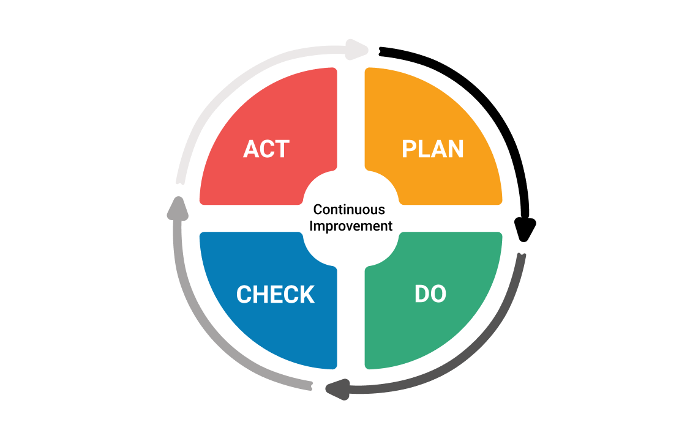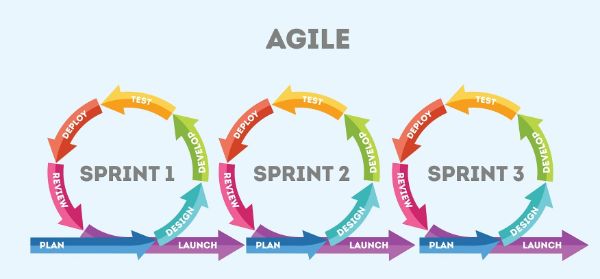"ERP implementation method is considered the key to the success of ERP project"
Currently, there are many different ERP implementation methods. Among them, the four most used strategies include: Big bang, Phased rollout, Agile, Parellel. If you're in the process of evaluating and considering ERP software, then it's crucial that you think about your ERP implementation strategy and which one is right for your business. In this blog, we'll look at 4 ERP implementation strategies in details, and discuss the pros and cons and help you decide which one to use in your project.
What are ERP implementation strategies?
Briefly, an ERP implementation strategy is a framework and operating system for implementing a new ERP system which considers the scope and various other factors of an ERP project and optimises for either speed, cost or business outcome.
Almost all ERP implementation strategies and processes contain the following steps:
1) ERP Evaluation: ERP requirements gathering, ERP software selection.
2) ERP Project Preparation:
3) ERP System Design
4) ERP System Build
5) ERP Testing
6) ERP Go-Live & Support
However, the way in which these steps are approached is often where the different strategies lie. An organisation will often choose to use a different ERP strategy depending on its business goals and constraints.
For example, some organizations need to minimise risk, whereas others need to focus on scalability, compliance or reducing cost. Before you decide on which ERP implementations strategy to use, you need to understand your ERP project goals.
Let's explore some of the most commonly used ERP implementation strategies below:
1. Big Bang ERP Implementation

The Big Bang is an ERP implementation strategy where a business transitions from its old system to the ERP system in a single instance. Instead of deploying in phases or small stages, the Big Bang strategy involves implementing the entire ERP system at once.
In this method, the entire business process, from financial management, inventory management, human resources management, to customer management, is migrated to the new ERP system simultaneously. This requires careful preparation, a specific deployment plan, and sufficient resources to ensure success.
>>>>Pros & Cons of Big Bang ERP Projects
Big bang ERP implementations are the fastest way to implement a new ERP system and realize the benefits of your new software, however they are risky. The sheer complexity of a big bang ERP approach means that the risk of failure is high.
You will also need to implement robust change management exercises to ensure that your business is able to adopt the new ERP system.
The Big Bang deployment method is ideal for small to medium-sized enterprises looking for a swift transition from old systems to ERP. It's also suitable for businesses undergoing significant organizational or process changes, seeking comprehensive transformation. However, it's not recommended for large enterprises with complex structures, as deploying the entire system at once may cause disruption and challenges in the conversion process.
2. Phased Rollout ERP Implementation

The Phased Rollout method deploys the ERP system in stages. In other words, instead of deploying the entire system at once, this method breaks the deployment process into smaller phases.
In each stage, a small portion of the ERP system is deployed and integrated into the current working environment of the business. Subsequent stages will continue to deploy different parts of the system until the entire system is deployed and operational in a synchronized manner.
>>>>Pros & Cons of Phased Rollout ERP Projects
Whilst this is a lower risk approach, it means that the benefits of your new ERP system are realized slowly. You will also need to pass data between your new ERP system and your existing systems, leading to productivity cost or regret integration costs.
>>>>Which business is suitable for the Phased Rollout ERP deployment strategy?
Phased Rollout is fitting for large, complex enterprises with high flexibility needs. It accommodates businesses with intricate processes and multiple modules, preventing disruptions that may arise from deploying the entire system at once. It's also a suitable choice for enterprises undergoing step-by-step changes or significant organizational adjustments, allowing flexible adaptation and effective testing before full implementation.
3. Agile ERP Implementation
The Agile deployment method focuses on implementing in short phases called "Sprints" and emphasizes continuous interaction and feedback between the deployment team and customers. Small deployment phases are planned and executed in short cycles, ranging from one to three weeks, during which new features and functionalities are developed and deployed.
The Agile method allows businesses to flexibly change requirements and priorities during the deployment process. This ensures flexibility and adaptability, enabling businesses to respond quickly and accurately to changes in the business environment.
>>>>Pros & Cons of Agile ERP Projects
Agile development in ERP minimizes risk through regular releases and comprehensive project completion. The integration of corporate information streamlines management across functions, promoting transparency in development processes. However, drawbacks include the risk of a single deployment in uncertain release schedules and challenges in establishing specific details like timeframes and costs within the dynamic nature of agile methods. The agile approach's reactive nature may lead to ephemeral planning, potentially obscuring the overarching strategy amid rapid responses and changes.

>>>> Which business is suitable for the Agile ERP deployment strategy?
Agile deployment is ideal for fast-paced, adaptable businesses. It offers a significant advantage for quick implementation and responsiveness to new requirements. Small businesses and startups favor Agile for its short development cycles, enabling testing and experimentation before full deployment, reducing risks, and optimizing the process. However, it may not be suitable for large enterprises with fixed requirements and complex processes, posing challenges in management and coordination at scale.
4. Parallel ERP Implementation

The characteristic of the Parallel deployment method is that the old and new systems operate simultaneously and coexist during a testing phase. During this process, data and business processes run concurrently on both systems to ensure consistency and accuracy. After evaluating and confirming that the new system functions well, the old system is eliminated, and the entire operation transitions to the new system.
The Parallel method allows businesses to continue operations through the old system while simultaneously implementing the new system, minimizing risks and ensuring consistency during the transition process.
>>>>Pros & Cons of Parallel ERP Projects
The Parallel deployment method allows users to learn a new system while retaining access to the old one as a fallback, reducing risk. However, it is costly, requiring additional time to maintain both systems concurrently, and may lead to employee turnover as tasks are duplicated. Executive commitment may diminish when faced with the substantial effort needed for implementation, despite initial support.
>>>> Which business is suitable for the Parallel ERP deployment strategy?
The Parallel deployment method is ideal for businesses prioritizing high security and reliability. It allows for simultaneous operation and thorough testing, making it suitable for critical and continuously active operations. Large enterprises with complex processes also benefit as running two systems in parallel ensures minimal disruption during the conversion process.
Conclusion
Businesses can clearly see the differences among current ERP deployment methods. However, to choose a suitable ERP deployment strategy and address the factors leading to ERP project failures, businesses can enhance their operations, increase sales, and boost revenue. Seeking additional assistance from ERP consultants and experts during this decision-making process is advisable. Contact us here for further guidance.